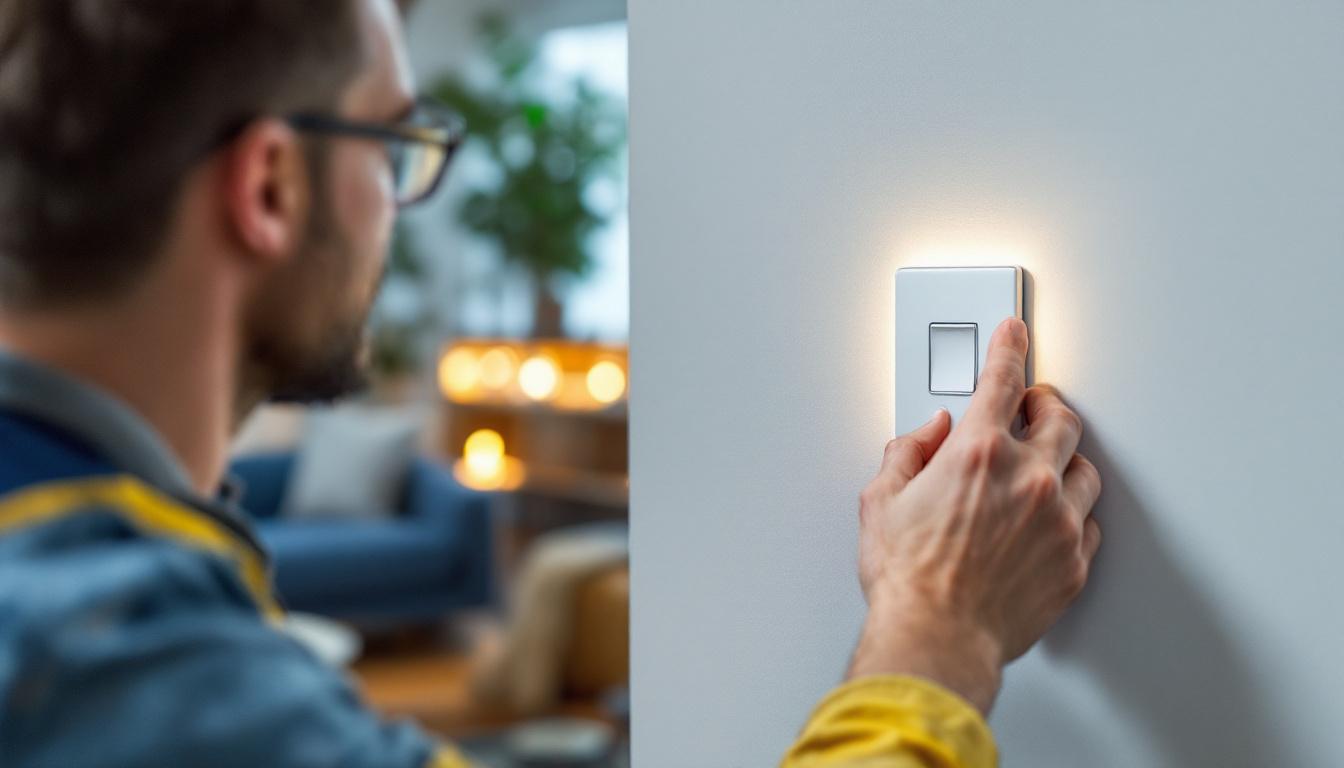
over the counter lighting plays a pivotal role in enhancing the functionality and aesthetics of various spaces, particularly in kitchens and work areas. As clients increasingly seek to optimize their environments, understanding the nuances of over the counter lighting becomes essential for lighting contractors. This article delves into what clients expect from contractors regarding this specialized lighting solution.
One of the primary considerations for clients is the type of light source used in over the counter lighting. LED strips have surged in popularity due to their energy efficiency, longevity, and versatility. Clients often appreciate the ability to choose from a variety of color temperatures, which can dramatically affect the mood and ambiance of a space. For instance, cooler tones can create a bright, energizing atmosphere ideal for cooking, while warmer tones can lend a cozy feel, perfect for social gatherings. Therefore, contractors must be well-versed in the latest lighting technologies and trends to provide clients with tailored solutions that meet their specific needs.
Moreover, the installation process of over the counter lighting can significantly impact its effectiveness. Clients typically expect contractors to not only install the lighting fixtures but also to ensure that they are positioned correctly to minimize shadows and maximize illumination. This involves a keen understanding of the layout and design of the kitchen or workspace, as well as the tasks that will be performed in those areas. Additionally, many clients are interested in smart lighting options that allow for remote control and automation, further enhancing convenience and energy management. By staying informed about these advancements, contractors can better serve their clients and help them achieve their desired lighting outcomes.
When it comes to over the counter lighting, clients often have specific needs and expectations. Understanding these can significantly improve the contractor-client relationship and lead to successful project outcomes.
Clients typically expect over the counter lighting to serve a functional purpose. Whether it’s illuminating a workspace for meal preparation or creating an inviting atmosphere for social gatherings, the primary goal is to enhance usability. Contractors should be prepared to discuss various lighting types, such as LED strips, puck lights, and under-cabinet fixtures, and how each can fulfill different functional requirements.
Moreover, clients may have particular tasks in mind that necessitate specific lighting solutions. For instance, someone who frequently cooks may prioritize bright, even lighting, while a client focused on aesthetics might prefer softer, ambient options. Understanding these distinctions allows contractors to tailor their recommendations effectively. Furthermore, it is essential to consider the layout of the kitchen or workspace, as the placement of lighting fixtures can greatly influence both functionality and overall user experience. For example, strategically positioning lights to eliminate shadows can enhance safety and efficiency during meal prep, making it easier for clients to navigate their spaces.
Beyond functionality, aesthetics play a crucial role in client expectations. Over the counter lighting should complement the overall design of the space. Clients often look for fixtures that align with their interior design style, whether modern, traditional, or minimalist. Contractors should be well-versed in various design trends and be able to suggest fixtures that enhance the visual appeal of the area.
Additionally, color temperature is a significant factor in aesthetics. Clients may have preferences for warm or cool lighting, which can dramatically affect the ambiance of a room. A knowledgeable contractor can guide clients in selecting the right color temperature to achieve their desired atmosphere. For instance, warmer tones can create a cozy and inviting environment, perfect for family gatherings, while cooler tones can lend a more energetic feel, ideal for a bustling kitchen. Beyond color temperature, clients might also be interested in the finish of the fixtures, such as matte, polished, or brushed metal, which can further influence the overall look and feel of their space. Understanding these nuanced preferences allows contractors to offer personalized solutions that resonate with the client’s vision and enhance the overall design of their home.
Clients expect lighting contractors to possess a solid technical knowledge of over the counter lighting systems. This expertise not only builds trust but also ensures that installations are safe, efficient, and compliant with regulations.
One of the primary expectations is that contractors understand the electrical requirements for various lighting installations. This includes knowledge of wattage, voltage, and circuit load. Clients may not be aware of the technical specifications needed for their lighting systems, so contractors must be prepared to explain these concepts in layman’s terms.
Moreover, compliance with local building codes and safety regulations is paramount. Clients expect contractors to ensure that installations meet these standards to avoid potential hazards or legal issues. Being proactive in this area not only protects the client but also enhances the contractor’s reputation.
As sustainability becomes increasingly important, clients often expect contractors to recommend energy-efficient lighting solutions. This includes understanding the benefits of LED technology, which offers longer lifespans and lower energy consumption compared to traditional bulbs.
Contractors should be able to explain the long-term cost savings associated with energy-efficient options, as well as any available rebates or incentives for choosing sustainable lighting solutions. This knowledge not only meets client expectations but also positions the contractor as a responsible and informed professional.
Clients expect a seamless installation process when it comes to over the counter lighting. Understanding best practices in installation can significantly enhance client satisfaction and project outcomes.
Before installation, a thorough planning phase is essential. Clients appreciate contractors who take the time to assess the space and discuss layout options that maximize both functionality and aesthetics. This may involve creating mock-ups or using design software to visualize the final outcome.
Additionally, contractors should consider the placement of outlets and switches, ensuring they are conveniently located for the client’s needs. A well-thought-out plan minimizes disruptions during installation and leads to a smoother overall process.
Quality workmanship is a non-negotiable expectation for clients. They want to know that the installation is not only visually appealing but also durable and reliable. Contractors should take pride in their work, ensuring that all fixtures are securely installed and that wiring is neatly organized.
Moreover, clients appreciate contractors who are detail-oriented and take the time to clean up after the installation. Leaving a workspace tidy demonstrates professionalism and respect for the client’s home or business.
Client expectations do not end once the installation is complete. Providing post-installation support is crucial for building long-term relationships and ensuring client satisfaction.
Clients often expect guidance on maintaining their over the counter lighting systems. This includes information on how to clean fixtures, replace bulbs, and troubleshoot common issues. Contractors should be prepared to offer this support, either through written materials or follow-up consultations.
Additionally, being available for troubleshooting can significantly enhance client trust. If a client experiences issues after installation, knowing they can reach out for assistance can make a substantial difference in their overall satisfaction.
As technology evolves, clients may wish to upgrade their lighting systems in the future. Contractors should be proactive in discussing potential upgrades during the initial consultation. This could include smart lighting options, which allow for remote control and customization of lighting settings.
By establishing a relationship that extends beyond the initial installation, contractors can position themselves as trusted advisors for future projects. This not only benefits the client but also fosters repeat business and referrals.
There are several misconceptions surrounding over the counter lighting that contractors should be aware of. Addressing these can help manage client expectations and improve overall satisfaction.
A common misconception is that all lighting fixtures serve the same purpose. Clients may not realize that different types of lighting—ambient, task, and accent—each have unique roles in a space. Educating clients on these distinctions can help them make informed decisions about their lighting needs.
Furthermore, the quality of fixtures can vary significantly. Clients might assume that a lower price point equates to a similar performance as higher-end options. Contractors should be prepared to explain the benefits of investing in quality fixtures, including longevity and energy efficiency.
With the rise of DIY culture, some clients may believe they can handle lighting installations themselves. While this may be feasible for simple projects, over the counter lighting often requires a level of expertise that only trained professionals possess. Contractors should communicate the potential risks of DIY installations, such as electrical hazards or improper fixture placement.
By highlighting the benefits of hiring a professional, such as ensuring safety and compliance, contractors can help clients understand the value of their services.
Over the counter lighting is a critical aspect of modern interior design, and clients have specific expectations regarding functionality, aesthetics, and technical knowledge. Lighting contractors who understand these expectations and are prepared to meet them will not only enhance client satisfaction but also build lasting relationships.
By focusing on planning, quality workmanship, and post-installation support, contractors can differentiate themselves in a competitive market. Additionally, addressing common misconceptions can further enhance client trust and satisfaction. In a world where lighting plays a pivotal role in enhancing spaces, being well-informed and responsive to client needs is essential for success.
Ready to elevate your lighting installations with products that blend quality, affordability, and convenience? At LumenWholesale, we provide lighting contractors with spec-grade lighting solutions that meet the highest industry standards. Say goodbye to inflated markups and hello to our extensive selection of top-quality lighting at unbeatable wholesale prices. With free shipping on bulk orders, you can ensure your projects shine without the burden of hidden fees. Make the smart choice for your business and your clients by choosing Wholesale Lighting at the Best Value with LumenWholesale.

Discover the benefits of LED solar outdoor lights in this comprehensive guide.

Discover the top challenges lighting contractors face when installing outdoor light fixtures.

Discover the top benefits of Wi-Fi light switches for lighting contractors, from enhanced energy efficiency to seamless integration with smart home systems.

Discover the critical role of red outlets in hospitals and why lighting contractors must prioritize them in their projects.